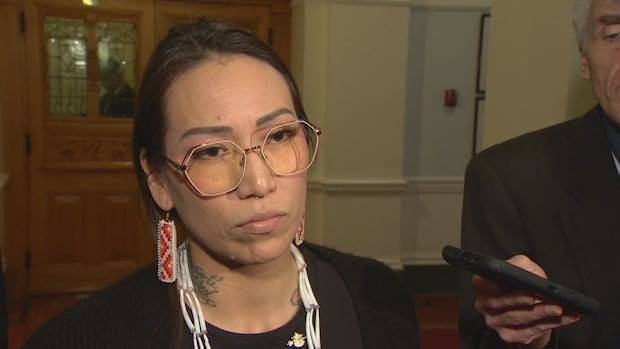Safer supply drug users will have to go to pharmacies multiple times a day under new B.C. model

The opioid crisis in British Columbia has taken a devastating toll on families across the province, including that of B.C. Conservative Opposition House leader Á’a:líya Warbus. Warbus shared her own heartbreaking story during question period, revealing the loss of four loved ones to the toxic drug crisis.
Warbus recounted the tragic death of her cousin, who she described as a brother to her, due to a lethal dose of drugs. She pointed fingers at the government for failing to stop the flow of fentanyl into communities and for introducing the safer supply program, which she believes has only worsened the crisis.
The safer supply program, which provides regulated opioids to drug users with a prescription, was meant to separate people from toxic street drugs. However, leaked Ministry of Health slides revealed that a significant amount of prescription opioids were being diverted and sold in exchange for deadly street drugs.
In response to these concerns, Health Minister Josie Osborne announced changes to the safer supply program, requiring people to take their medication under the supervision of a pharmacist or health provider. While the intention is to prevent diversion, harm reduction advocates worry that these changes will make it harder for people to access prescription opioids, pushing them back to the dangerous street fentanyl.
Former drug user and outreach worker Guy Felicella emphasized the importance of regulated opioids in preventing fatal overdoses and supporting addiction treatment. He expressed concerns that the new supervised dosing model will create barriers for those in need of prescription opioids.
Despite the criticisms, Osborne defended the changes, stating that the safer supply program has been effective in stabilizing people and connecting them to treatment and recovery. However, individuals like Lorna Bird, who relies on hydromorphone to function, are worried about the practicality of having to visit the pharmacy multiple times a day for supervised dosing.
Warbus highlighted the disproportionate impact of the opioid crisis on Indigenous communities and criticized the NDP government’s approach to addiction treatment. She shared the tragic story of her 13-year-old nephew, who passed away after accidentally ingesting drugs he found in a wallet.
In addition to the changes to the safer supply program, Osborne announced an investigation into pharmacies offering incentives to doctors and housing providers to attract clients with safer supply prescriptions. These pharmacies receive government funding based on the number of prescriptions they fill, leading some to resort to kickbacks to increase their client base.
As British Columbia grapples with the ongoing opioid crisis, it is clear that a comprehensive and compassionate approach is needed to address the root causes of addiction and prevent further loss of life. The voices of those impacted by this crisis must be heard, and solutions must be implemented to ensure that no more families suffer the devastating consequences of this epidemic.




